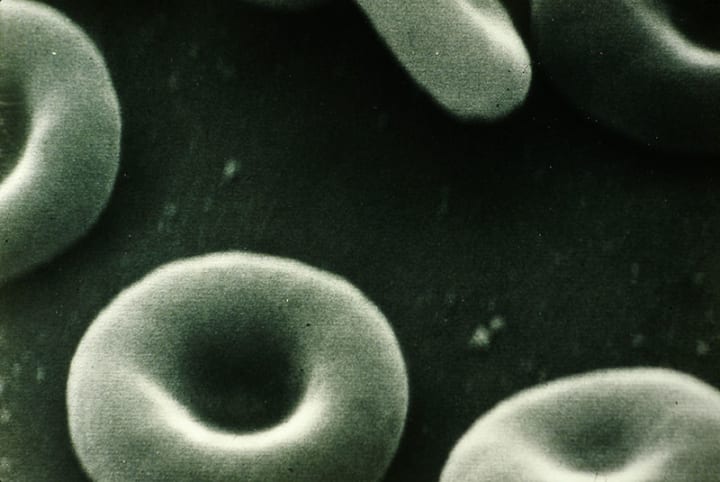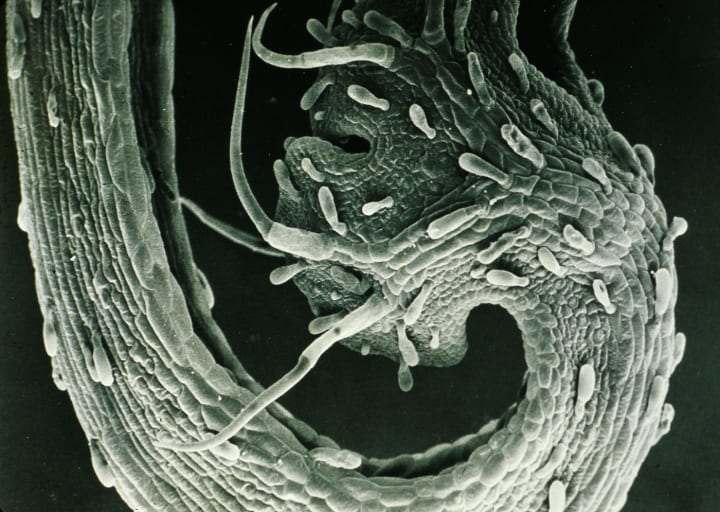Should Vaccinations Be Administered?
Disagreements regarding the question "should vaccines be administered?" continue among scientists.

What could possibly link the theology of Protestantism with the rivalry between Jonas Salk and Albert Sabin over their respective polio vaccines?
A minor tragedy that occurred in 1978 provides the answer. A fundamentalist sect in the small Netherlands town of Staphorst was ravaged by poliomyelitis, which struck down and paralyzed 79 people. Although the overall immunization rate in Holland was more than 95 percent, members of this close-knit community refused vaccination on religious grounds. The Staphorst tragedy dramatized the continuing disagreement among scientists as to the question "should vaccines be administered?" and, if yes, precisely what sort of vaccine should have been administered to safeguard us against one of life's most harrowing maladies. Two varieties of polio vaccine were used in different parts of the world.
Vaccinated Unintentionally

There was a vaccine that was pioneered in the 1950s by Dr. Jonas Salk which contained inactivated (killed) virus and had to be injected. The alternative is a much more popular version, developed later by Dr. Albert Sabin, which is given orally. It consists of a living but weakened virus that colonizes the human gut—just as poliovirus does—but without invading the nervous system.
Over the years, some mighty disputations have raged about the merits of these two rival products. The United States controversy, unresolved to this day, goes back to the early 1960s, when Basil O'Connor decided to throw the weight of the National Fund for Poliomyelitis Research behind Sabin's vaccine rather than Salk's version. The Dutch experience underlined one of the arguments for that switch in policy. A person inoculated with the Salk vaccine simply becomes immune to polio. Someone given the Sabin vaccine, however, is likely to shed the virus in his feces. Inevitably, the microbe spreads around the community, and many other people became immunized without even knowing it.
Hence the significance of the tragedy in the Netherlands, where the authorities have elected to use the Salk vaccine. There is an excellent chance that if they had chosen Sabin's product instead, at least some members of Staphorst's rigid Protestant sect would have unwittingly become invulnerable to poliomyelitis. Calamity might have been avoided.
However, there are points on the other side of the argument.
Living Viruses Pose a Health Hazard

From the beginning of Salk and Sabin's rivalry, independent experts warned that a vaccine containing living virus (as does Sabin's) posed a unique theoretical hazard. The virus might mutate and become capable of paralyzing recipients, just as the deadly agent from which it was originally derived does. With a killed vaccine, such danger is virtually unthinkable.
We now know that these risks are not simply hypothetical. Genuine poliomyelitis had been caused in both the United States and Britain by a virus derived from that used in the Sabin vaccine. Although the numbers were exceedingly small (some five a year in the USA) when compared with the millions of people immunized, they confirm that a living vaccine can indeed be more hazardous than a dead one.
The only virtue of what happened at Staphorst is that it highlighted one aspect of the controversy in a somberly explicit fashion. Killed vaccine undoubtedly bestows a high level of resistance to polio, so we can overlook one of the earliest arguments against its use: that live vaccine is much more potent in triggering the manufacture of antibodies. If the Dutch government had selected the Sabin vaccine, the virus would surely have spread in the population, and at least some adherents of a fundamentalist religious group would have been immunized without ever knowing it. Some would also have been spared lifelong handicap. We must, however, also reckon with the remote chance of some members' contracting polio as a direct result of the vaccines being given to other people. It was a perplexing dilemma, and the most that the prestigious British weekly The Lancet could say recently about the subject was that while "such involuntary vaccination is undesirable... it is preferable to having large outbreaks."
Controversy Over Child Vaccinations

Have you hesitated to vaccinate your child? It is an assessment of risk. The arguments over vaccinations have existed since the inception of the idea. Immunization has factually left certain illnesses almost non-existent. Beyond the responsive argument that immunization has led to any number of counter-productive health risks, the more important question is why we should continue to vaccinate our children in a world where the disease no longer exists. When is it time up for that particular concern, if ever?
A minor decline in immunization rates could theoretically cause a return of the infectious diseases thought to be wiped out. This probability is debated endlessly by the medical community. Germs are only a plane ride from most of us. Meanwhile, parents have expressed concern that measles-mumps-rubella (MMR), the vaccine for measles, can be linked to autism. Reports are conflicting but the response is factual. Declines in immunization have been correlated to outbreaks in specific areas of the country. This is not to say that a parent should have no choice, but it is important to understand macro possibilities such as outbreaks and how one parent's refusal to have their child vaccinated can impact these, as well as more visible issues such as side effects. However, vaccine education often backfires, and raising awareness on these issues is therefore a struggle.
Common Side Effects

Redness or swelling around the point of injection is not uncommon and is usually temporary, as is a fever that might occur with children or infants.
An allergic reaction after being vaccinated is unusual but is generally manifested by a rash or itching. There are numerous ways for the medical practitioner to respond to this. In severe cases, an allergic reaction might be anaphylactic. As rare as it is, always ask your medical practitioner if they are prepared for the possibility. Once again, it is also important to weigh the risk of these side effects against the risk to both your child and the community if no vaccination is given. Many doctors have explored this paradox, including Kurt Link in his book The Vaccine Controversy: The History, Use, and Safety of Vaccinations.
While millions of Americans receive vaccinations each year, there is another, vocal, segment of society opposed to immunizations. Dr. Kurt Link's The Vaccine Controversy explores the history of vaccine development and takes a look at the future of vaccinations. Link looks at the immune system and various types of vaccines, exploring the efficacy and potential toxicity of each one and letting the reader decide the answer to "should vaccinations be administered?"
About the Creator
Futurism Staff
A team of space cadets making the most out of their time trapped on Earth. Help.






Comments
There are no comments for this story
Be the first to respond and start the conversation.